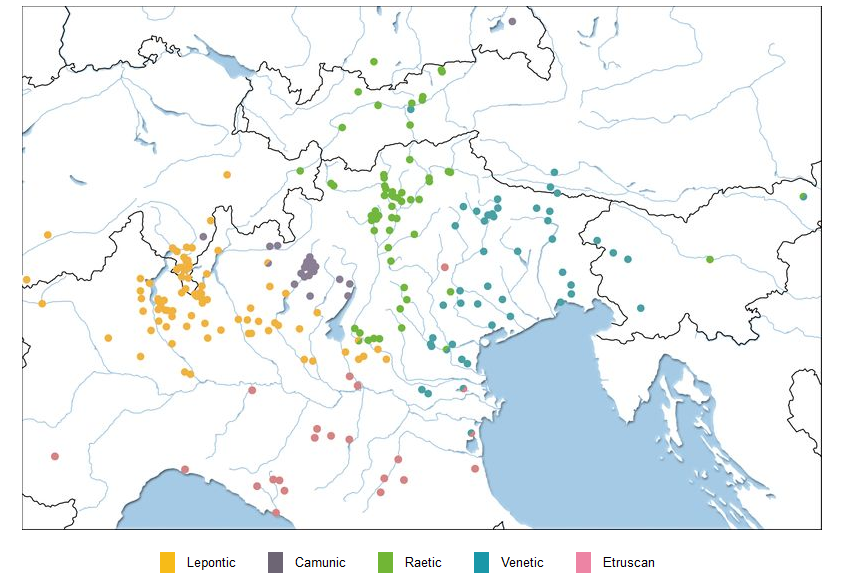Pax Augusta
Elite member
I'm not a linguist, but I'm fairly sure a language can't simply change from one branch in to another depending on socio-political events.
Anyway, the first inscriptions of the venetic laguage should be from around the VI century BC, so well before the the led to the loss of independence of the venetic tribes, and I believe they are all generally classified under the italic branch.
Romans and Veneti themselves felt some kind of commonship, expecially when facing the cisalpine celtic tribes and the assimilation of the Venetic tribes under the Roman Republic was pretty peaceful (at least for the roman standards:embarassed.
The issue of Venetic as an Italic language is not resolved I think. When the genetic study on the Etruscans was presented in 2021, an Italian archaeologist said that the Ancient Veneti had some relationship with the Etruscans. I don't remember much else. He did not, however, talk about linguistics.
There is no mention of it here.
https://mnamon.sns.it/index.php?page=Lingua&id=42#presentazione
https://mnamon.sns.it/index.php?page=Scrittura&id=31&lang=it
Here, it does mention a possible relationship with Latin (p. 842) but it says that it's difficult to determine. Then Venetic not only shares some characteristics with Latin but also with Celtic. Which should come as no surprise, because at this point the chances that there is some truth in the Italo-Celtic theory are very high.
Wallace, Rex (2004). "Venetic". In Woodard, Roger D. (ed.). The Cambridge Encyclopedia of the World’s Ancient Languages. University of Cambridge. pp. 840–856.







